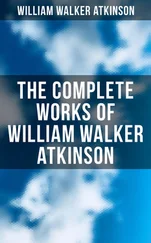Many elaborate systems of mnemonics have been based upon this law of contiguous association, but while these systems, and many based upon the law of association by resemblance, have been found useful as an aid to memorizing, and are quite ingenious, they soon prove cumbersome and intricate and serve to confuse the memory rather than to develop it. Without attempting to follow these systems, however, the student will find it useful to cultivate this faculty of associating impressions, as it is much easier to recall impressions when they are closely associated with other impressions along the lines of contiguity. This faculty may be developed by exercises designed to concentrate the attention upon an impression and the one immediately succeeding it, or preceding it, so that the two may become practically welded together. Others may then be added until they are connected in such a way that to remember one is to recall all. The closer the contact the easier the recall— the sooner they are connected the more complete the welding. If the two impressions are not quickly and closely connected, there is always the chance that an irrelevant thought may come in between them and interfere with the contiguous association.
An understanding of this great law of association of impressions shows us that when we wish to store away an isolated fact in such a way that we may readily recall it, we must associate it with some other impression already stored away. The more we can associate a fact with other known facts, the more readily will we recall it, and the more associations we can give an impression the better it is for the purpose. Things which were originally contiguously associated, but which were associated by resemblance, may be made contiguously associated by their recall by resemblance several times in the same order, as they thus fall under the law of contiguity as well as the law of resemblance. The greater and more numerous the resemblances, the easier and surer the recall. The apparently wonderful powers of memory of miscellaneous facts possessed by some wellread and closeobserving men, is due to the fact that they are able to find points of resemblance between widely separated facts, and are able to run from one set of facts to another in a way impossible to a man who has not cultivated the power of association by resemblance. Such men will practically take hold of a loose end of thought, and then simply unwind the ball.
Chapter IX.
Remembrance, Recollection and Recognition.
Table of Content
Treating of these three operations of the mind, which are frequently considered as being the same thing—The differences are pointed out and each term is clearly defined and explained—Remembrance is the word meaning that process of the memory whereby stored impressions come again into the field of consciousness, without an effort of the will, as by association, resemblance, etc.—Recollection is the word used to describe that process of the memory whereby a thing is recalled by an effort of the will—Recognition is that process of memory whereby, when we see or hear a thing, we know that we have seen or heard it before.
THE THREE words forming the title of this chapter are frequently used as meaning practically the same thing. This is particularly true in the case of the first two mentioned words. But each of these words has a definite meaning, and refers to a distinct process of the memory.
Remembrance is the word meaning that process of the memory whereby previously stored impressions come again into the field of consciousness without an effort of the Will, as by association, resemblance, etc. Recollection is the word used to describe that process of the memory whereby a man recalls, by an effort of the Will, some impression previously stored away. Remembrance is apparently automatic in its action, while recollection is an act of volition, and is often accompanied with much effort. Recognition is the word applied to that process of the memory whereby, when we see or hear a thing, we know that we have seen or heard it before. It is a conscious association of the present impression with one had before. It is a recognizing—a reknowing. If we see a thing on two different occasions, and do not “know” it when seen the second time, we do not recognize it, and the memory stores away two different impressions of the thing. If afterwards, we become aware of the identity of the two impressions, they become fused into one impression. Authorities lay down three laws of remembrance, as follows:
1. All impressions have a tendency to revive previous impressions of a similar character; but a previously received impression will not thus be brought again into the field of consciousness, unless it be sufficiently distinct, unless the originally faint impression has been recalled to the consciousness by recollection and strengthened by repeated revivals.
2. An impression received similar to one previously received, if not recognized as being similar, will be stored away as a separate impression. But if the previous impression be recalled at the same time, and recognized as similar, the two impressions will be associated in the memory, and stored away together.
3. When a part of an associated series of impressions is revived, the other parts may be revived if desired with a minimum of effort; and the revival of an impression renders easier the revival of any impression received about the same time, without reference to resemblance.
In considering the first law of remembrance; we must not forget that one man may see a resemblance between things which appear to have no connection or resemblance to a second man. And this difference, of course, is carried out in the application of this law. If the resemblance is not seen or recognized, there is no association in the process of remembering.
The act of remembering is almost altogether a subconscious one and we are not consciously aware of its workings. We may be lost in thought and one subject after another passes before the consciousness, and we do not perceive the connection or association at the time. We can often, however, retrace the steps taken and can see the slight thread of connection between the different subjects of our thought. We may start by considering a table, and end by thinking of some totally different character of thing located at a far distant part of the world.
When we remember a thing it is generally because the association is natural, close and direct. When we are forced to recollect a thing we must use the Will to find connections and associations between a number of things before the missing impression is found. There is scarcely any conscious mentation required in the case of remembrance as compared with the process of recollection. The one is direct, and the other indirect.
We have spoken of the fact that it is most difficult to bring into the field of consciousness an impression but faintly recorded, while it is comparatively easy to so bring forth one that has been clearly and distinctly recorded by means of the attention. But a poor impression may be strengthened by a frequent revival, until it will become nearly or quite, as distinct, and as easy to recall, as one of original clear recording. Impressions received under circumstances of great importance are apt to be clearly recorded, and consequently easily recalled.
We desire to call your attention to an important fact concerning the revival of impressions, and the consequent strengthening of the original impressions by the revival. It is the fact that the gist of the whole strengthening process lies in the conscious revival of the original impression, the holding of it before the field of consciousness by the attention, and the sending it back to the storehouse strengthened by the new amount of attention bestowed upon it. The conscious revival of a previous impression, and the new attention given it, is worth much more than the repeated viewing of the object originally causing the impression, at least so far as that particular impression is concerned. Of course a repeated view of the object will probably bring to light details which were not included in the first impression. We have spoken of this in our chapter on Eye Perception, and exercises.
Читать дальше












